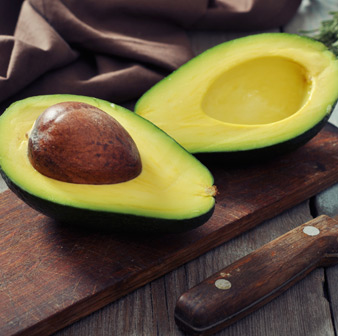| Online: | |
| Visits: | |
| Stories: |

| Story Views | |
| Now: | |
| Last Hour: | |
| Last 24 Hours: | |
| Total: | |
30 Healthiest Foods of All Time
Follow TIS on Twitter: @Truth_is_Scary & Like TIS of Facebook- facebook.com/TruthisScary

In a survey of at-home spending patterns on food among US households, the Economic Research Service (ERS) of the US Department of Agriculture revealed Americans are throwing a lot of their food budgets toward very unhealthy foods.
The average US household spent most of their food budget (nearly 18 percent) on refined grains followed by sugar and candies (at nearly 14 percent). The next highest category was red meat (mostly from concentrated animal feeding operations, or CAFOs), followed by frozen or refrigerated entrees and beverages.1
In stark contrast, Americans spent less than 0.5 percent of their food budget on dark green vegetables and a similar amount on orange vegetables. Other vegetables made up less than 4 percent of at-home food spending and whole fruits just over 6 percent.
As reported by Forbes:2
“It is not that shoppers are spending less than they should on food in general. We spend 17 percent of our food shopping dollars on refined grains (more than three times what is recommended).
…And while the USDA recommends spending less than 1 percent on sugar and candies, most Americans spend closer to 14 percent of their food budget on sweets. This means that it is in fact not the desire to save money that makes us eat badly, but our own poor choices.”
I believe it is partly a matter of making good choices and partly a matter of getting educated about which foods are truly healthy. Contrary to popular belief, you don’t have to break the bank to eat good food. In fact, many of the healthiest foods that follow are quite economical.
Even better, because there are so many healthy foods, you can plan your meals around what’s in season… and what’s on sale.
In order to protect your health, I advise spending 90 percent of your food budgeton whole foods, and only 10 percent on processed foods. Choosing from the list below is a very good start to feeding your family right.
The 30 Top Healthiest Foods
The slideshow above features 30 of the healthiest foods you eat. Below, I’ve detailed 15 of them.
1. Avocado
Avocados, which are actually classified as a fruit, are low in fructose and rich in healthy monounsaturated fat and potassium, and research has confirmed the avocado’s ability to benefit vascular function and heart health.
Personally, I eat a whole avocado virtually every day, which I usually put in my salad. This increases my healthy fat and calorie intake without raising my protein or carbohydrate intake by much.
Avocados are also very high in potassium (more than twice the amount found in a banana) and will help balance your vitally important potassium-to-sodium ratio. Avocados also provide close to 20 essential health-boosting nutrients, including fiber, vitamin E, B-vitamins, and folic acid. Besides eating them raw, you can use avocado as a fat substitute in recipes calling for butter or other oils.
Another boon of avocados—they’re one of the safest fruits you can buy conventionally grown, so you don’t need to spend more for organic ones. Their thick skin protects the inner fruit from pesticides.
2. Swiss Chard
Swiss chard belongs to the chenopod food family, along with beets and spinach. It’s an excellent source of vitamins C, E, and A (in the form of beta-carotene) along with the minerals manganese and zinc.3 When you eat Swiss chard, you get a wealth of antioxidant and anti-inflammatory benefits.
As reported by the George Mateljan Foundation:4
“The range of phytonutrients in chard is even more extensive than researchers initially suspected, and at this point in time, about three dozen antioxidant phytonutrients have been identified in chard, including betalains (both betacyanins and betaxanthins) and epoxyxanthophylls.
Many of these antioxidant phytonutrients provide chard with its colorful stems, stalks, and leaf veins.”
The betalin pigments in Swiss chard (which are also found in beets) support your body’s Phase 2 detoxification process, which is when broken down toxins are bound to other molecules so they can be excreted from your body. Swiss chard also contains an important mix of nutrients, including high amounts of both magnesium and vitamin K1, to support your bone health.
In addition, Swiss chard contains a flavonoid called syringic acid, which may help regulate blood sugar and provide benefits to those with diabetes, along with kaempferol, a flavonol that may help fight cancer and lower your risk of chronic diseases including heart disease.
3. Garlic
Garlic is rich in manganese, calcium, phosphorus, selenium, and vitamins B6 and C, so it’s beneficial for your bones as well as your thyroid. It’s thought that much of garlic’s therapeutic effect comes from its sulfur-containing compounds, such as allicin, which are also what give it its characteristic smell.
Other health-promoting compounds include oligosaccharides, arginine-rich proteins, selenium, and flavonoids.5 There is research demonstrating garlic’s effects for more than 160 different diseases.6 In general, its benefits fall into four main categories:
- Reducing inflammation (reduces the risk of osteoarthritis and other disease associated with inflammation
- Boosting immune function (antibacterial, antifungal, antiviral, and antiparasitic properties)
- Improving cardiovascular health and circulation (protects against clotting, retards plaque, improves lipids, and reduces blood pressure)
- Toxic to 14 kinds of cancer cells (including brain, lung, breast, gastric, and pancreatic)
In addition, garlic may be effective against drug-resistant bacteria, and research has revealed that as allicin digests in your body, it produces sulfenic acid, a compound that reacts with dangerous free radicals faster than any other known compound.7 This is one of the reasons why I named garlic as one of the top seven anti-aging foods you can consume.
4. Sprouts
Sprouts may offer some of the highest levels of nutrition available, including vitamins, minerals, antioxidants, and enzymes that help protect against free radical damage.
Fresh broccoli sprouts, for instance, are far more potent than whole broccoli, allowing you to eat far less in terms of quantity. For example, research has revealed that three-day old broccoli sprouts consistently contain anywhere from 10-100 times the amount of glucoraphanin—a chemoprotective compound—found in mature broccoli.8
The compound glucoraphanin also appears to have a protective effect against toxic pollutants by improving your body’s ability to eliminate or excrete them. Glucoraphanin has also been shown to protect against cancer.
Sprouts are far less expensive (90 percent or greater) if made at home rather than purchased, so I strongly recommendgrowing your own sprouts. Try broccoli sprouts, watercress sprouts, and sunflower sprouts, for starters.
5. Mushrooms
Aside from being rich in protein, fiber, vitamin C, B vitamins, calcium, and minerals, mushrooms are excellent sources of antioxidants. They contain polyphenols and selenium, which are common in the plant world, as well as antioxidants that are unique to mushrooms.
One such antioxidant is ergothioneine, which scientists are now beginning to recognize as a “master antioxidant.” A study in the journal Nature9 discussed the importance of ergothioneine, which is fairly exclusive to mushrooms, describing it as “an unusual sulfur-containing derivative of the amino acid, histidine,” which appears to have a very specific role in protecting your DNA from oxidative damage.
In addition, some of the most potent immunosupportive agents come from mushrooms, and this is one reason why they’re so beneficial for both preventing and treating cancer.
Long-chain polysaccharides, particularly alpha and beta glucan molecules, are primarily responsible for the mushrooms’ beneficial effect on your immune system. In one study, adding one or two servings of dried shiitake mushrooms was found to have a beneficial, modulating effect on immune system function.10
6. Kale
Just one cup of kale will flood your body with disease-fighting vitamins K, A, and C, along with respectable amounts of manganese, copper, B vitamins, fiber, calcium, and potassium. With each serving of kale, you’ll also find more than 45 unique flavonoids, which have both antioxidant and anti-inflammatory benefits.11
Kale is also a good source of cancer-fighting sulforaphane and indole-3-carbinol. To date, kale has been found to lower the risk of at least five types of cancer, including bladder, breast, colon, ovary, and prostate.12 The glucosinolates in kale and other cruciferous vegetables break down into products that help protect DNA from damage.13
While some research suggests raw kale is best for cancer prevention, other studies suggest lightly cooked is best, in part because it improves kale’s ability to bind with bile acids in your digestive tract. This makes the bile acids easier for your body to excrete, which not only has a beneficial impact on your cholesterol levels, but also on your risk of cancer (bile acids have been associated with an increased risk of cancer).
7. Spinach
Spinach is rich in vitamins, minerals, and antioxidants, including folate, vitamin A, iron, potassium, calcium, zinc, and selenium. Spinach also contains flavonoids that may help protect your body from free radicals, while offering anti-inflammatory benefits and antioxidant support. As reported by the George Mateljan Foundation:14
“While this mixture of conventional nutrients gives spinach a unique status in the antioxidant and anti-inflammatory department, it is the unusual mixture of phytonutrients in spinach that “seals the deal” in terms of its antioxidant and anti-inflammatory components.
In terms of flavonoids, spinach is a unique source of methylenedioxyflavonol glucuronides, and in terms of carotenoids, its difficult to find a more helpful source of lutein and zeaxanthin. The epoxyxanthophyll carotenoids neoxanthin and violaxanthin are also welcomed constituents of spinach leaves.”
Source: http://truthisscary.com/2015/11/30-healthiest-foods-of-all-time/



